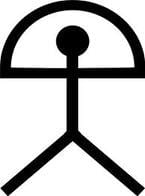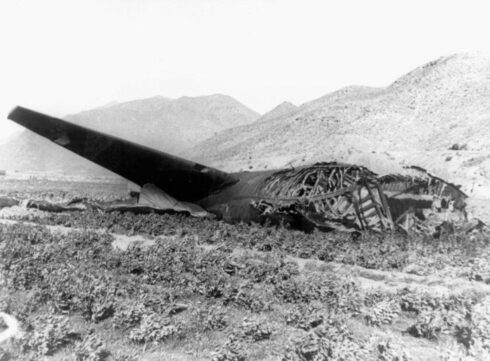
MANY people probably know that the symbol or logo for the province of Almería is the Indalo. The Indalo looks like a stick man who seems to be carrying a rainbow.
What people may not know is that the Indalo is based on a cave painting on the wall of a cliff face close to the town of Vélez Blanco in the north east corner of the province of Almería. It is said that the paintings are around 4500 years old.
The location of the paintings is a place about 1 km outside Vélez Blanco called Cueva de los Letreros. As well as the Indalo there are also cave paintings of the Chaman or Brujo which has been adopted as the symbol for the town of Vélez Blanco.
Apparently it is believed that the people who created the paintings lived in the valley below the cliff and the area of the paintings was a bit like a ‘church’ for them. They paid visits up to the site and perhaps performed sacrifices on the site (hence the Brujo having a goats head and holding what is thought to be a scythe and a heart).
You might expect the paintings to be inside a cave and well protected. However they are on a cliff wall underneath an overhang.

When I went to see the paintings there was a guide, Milar, who told us all about the paintings and the possible way of life of the people who painted them. Interesting points that Milar made throughout the talk included:
- The paintings are almost always in red and made from a paste of iron deposits. Perhaps red was to signify blood?
- There were many different symbols including the Brujo, the Indalo, triangles representing woman, symbols for water, lightening, the sun, the moon and various animals.
- The site has been robbed of some of the paintings. Also, the paintings are deteriorating due to the action of the weather. Plus the paintings are getting covered up by calcium deposits.
- The good news is that there are now people (normally university professors working in their summer break) who are sanctioned by UNESCO to restore the paintings. It is a painstaking and time consuming job. Also, there are not enough experts to do the job so it will be some time before all of the paintings here get restored.
- The semi-circle at the top of the Indalo sign may have been a special ceremonial bow that was held up as part of a ritual.
Please note that this article is a summary of a longer article I published about this subject in the summer of 2009. You can see the original article here.






